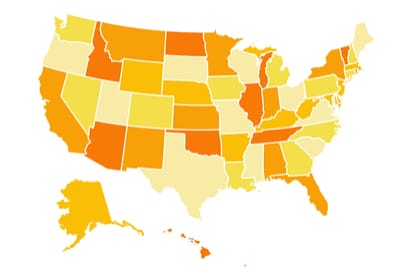Thanks to numerous federal regulations, the kinds of credentials and training you need to be a regular classroom teacher are pretty predictable—you’ll need to have finished a certain amount of training hours and fieldwork, and in almost all cases, you’ll need a license.
The requirements for substitute teachers is far less cut-and-dry. There aren’t really any federal regulations for substitute teachers. In many cases, there aren’t even state regulations, as many state-level education departments prefer to let local school districts determine their own substitute teacher policies. In this post, I’ll list the range of requirements substitute teachers may need to meet, depending on the state, school district, or individual school.
Highest level of education
Some school systems and education broads require a minimum of a bachelor’s degree for substitute teaching work. Others have lower education requirements. The state of Nevada, for example, requires its substitute teachers to have 62 university credits, 6 of which must be in Education. The District of Columbia asks its subs to have 60 hours of college credit, with no special requirements for Education coursework. Other states like Georgia and Vermont require a minimum of a high school diploma, with some individual school districts choosing to set higher educational requirements for their substitute teachers.
And there are still other cases where states set no minimum educational standard at all. In South Dakota and Mississippi it’s theoretically possible for someone to substitute teach without even completing high school. Realistically however, most school districts won’t hire substitutes unless they have at least a high school level of education. In Mississippi particularly, school districts ranked “Class 5” by the state (the best rank for educational quality in Mississippi) have a universal policy of hiring only high school graduates to sub in their classrooms
Substitute teacher training requirements
Some states and school districts require special training for substitute teachers. Some substitute teacher training regimens are fairly minimal, such as the short course required in Hawaii or the 4-hour seminar Tennessee gives its substitutes. Other states like Oregon may require the equivalent of a full teaching degree—in this case, substitute teaching positions are given primarily to people who have taken extensive teacher training courses and are in the process of getting state licensure.
Licensure requirements
There are also cases where substitute teachers receive their own certificates. While the other requirements listed above can be set by states, counties, cities, and even individual schools, substitute licensure requirements are set only at the state level. States such as New Jersey require a certain amount of college credits or relevant work experience for a substitute license, while other states are stricter. In Ohio for instance, a full bachelor’s degree is a prerequisite for a substitute teaching license.
There are still other states and districts that actually require subs to hold a regular teaching certificate—the kind used by fully licensed instructors. Instances of this requirement at the state level include Minnesota and Iowa. This is also a fairly common requirement within individual school districts. Most states that don’t require a full teaching license for substitute instructors have at least a few individual school systems that do ask substitutes to meet this high standard.
Maximum duration at a single assignment
It’s also quite common for state and local education boards to limit the amount of time that an uncertified substitute teacher can work in a given classroom. In Kansas, substitutes can’t teach for more than 90 consecutive days in the same class without certification in a relevant teaching area. Nevada sets this limit to just 20 days, and other durations can be even shorter, as seen with Michigan’s 15-day limit.
Current trends
The education reform movement has made parents, teachers, and school administrators much more conscious of educational quality and high teacher training standards. As a result, there is a growing trend for schools to hire only degree holding or certified substitute teachers, even in the absence of any official regulations.
Hiring fully certified substitute teachers has become especially common in competitive school districts with few job openings for full teachers. In many cases, starting out as a substitute has become a way for licensed teachers to eventually work their way up to a full-time licensed teaching position in a school district of their choice.
Parochial and religious schools are the least likely to require licensure of substitute teachers. Such schools also have much more flexibility to give substitute teaching work to instructors who lack degrees and teacher training, as these schools don’t have to follow all of the standards set by state and local governments.





Leave a Reply